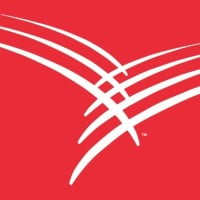
Cardinal Health Company Cyber Security Posture
cardinalhealth.comCardinal Health is a distributor of pharmaceuticals, a global manufacturer and distributor of medical and laboratory products, and a provider of performance and data solutions for healthcare facilities. With more than 50 years in business, operations in more than 30 countries and approximately 48,000 employees globally, we are moving healthcare forward. Disclaimer: LinkedIn is a third-party site unaffiliated with Cardinal Health. Cardinal Health is not responsible for the privacy or security policies or practices on LinkedIn or on any of the third-party websites that we may link to through LinkedIn. You should carefully review the privacy and security practices of LinkedIn and linked third-party websites. We do not necessarily endorse any information found here nor are we responsible for the accuracy of any information, opinions, claims, or advice found here or shared here by our followers. By posting content, ideas, or pictures, you grant Cardinal Health a non-exclusive, royalty-free, perpetual, and worldwide license to use your content and any images posted by you, including the rights to copy, distribute, transmit, display, reproduce, edit, translate, and reformat, and incorporate into a collective work. Cardinal Health reserves all rights relating to the company's LinkedIn account, including removing postings and prohibiting individuals from participating on the page.
Cardinal Health Company Details
cardinal-health
31651 employees
681351.0
62
Hospitals and Health Care
cardinalhealth.com
347
CAR_7632068
In-progress
Between 900 and 1000
This score is AI-generated and less favored by cyber insurers, who prefer the TPRM score.
 Cardinal Health Global Score
Cardinal Health Global Score.png)

Cardinal Health Company Scoring based on AI Models
| Model Name | Date | Description | Current Score Difference | Score |
|---|---|---|---|---|
| AVERAGE-Industry | 03-12-2025 | This score represents the average cybersecurity rating of companies already scanned within the same industry. It provides a benchmark to compare an individual company's security posture against its industry peers. | N/A | Between 900 and 1000 |
Cardinal Health Company Cyber Security News & History
| Entity | Type | Severity | Impact | Seen | Url ID | Details | View |
|---|
Cardinal Health Company Subsidiaries

Cardinal Health is a distributor of pharmaceuticals, a global manufacturer and distributor of medical and laboratory products, and a provider of performance and data solutions for healthcare facilities. With more than 50 years in business, operations in more than 30 countries and approximately 48,000 employees globally, we are moving healthcare forward. Disclaimer: LinkedIn is a third-party site unaffiliated with Cardinal Health. Cardinal Health is not responsible for the privacy or security policies or practices on LinkedIn or on any of the third-party websites that we may link to through LinkedIn. You should carefully review the privacy and security practices of LinkedIn and linked third-party websites. We do not necessarily endorse any information found here nor are we responsible for the accuracy of any information, opinions, claims, or advice found here or shared here by our followers. By posting content, ideas, or pictures, you grant Cardinal Health a non-exclusive, royalty-free, perpetual, and worldwide license to use your content and any images posted by you, including the rights to copy, distribute, transmit, display, reproduce, edit, translate, and reformat, and incorporate into a collective work. Cardinal Health reserves all rights relating to the company's LinkedIn account, including removing postings and prohibiting individuals from participating on the page.
Access Data Using Our API

Get company history
.png)
Cardinal Health Cyber Security News
IntelBroker Strikes HPE Again, Cardinal Health Breach, and U.S. ISP Root Access Sale
The threat actor states that the breach stems from a supply chain attack conducted on January 16, 2025, targeting APEX Custom Software, Inc., ...
Cardinal Health (NYSE:CAH) Welcomes New Independent Directors With Tech and Healthcare Expertise
Cardinal Health (NYSE:CAH) recently appointed Robert Musslewhite and Sudhakar Ramakrishna to its Board of Directors, which may have ...
ColorTokens appoints Guru Gurushankar as SVP and GM for healthcare and life sciences
Gurushankar holds a PhD in Nuclear Engineering from the University of Michigan and an MBA from the University of Pennsylvania'sWharton School of ...
Cardinal Health Adds Two Members to Its Board of Directors
In a March 10 news announcement, the Dublin, Ohio-based company said its board had elected Robert Musslewhite and Sudhakar Ramakrishna.
Cardinal Health welcomes 2 new board members
Cardinal Health welcomes 2 new board members. Robert Musslewhite and Sudhakar Ramakrishna are joining Cardinal Health's board of directors.
Exclusive: Apex Custom Software hacked, threat actors threaten to leak the software (1)
The hackers known as 0mid16B tweeted, “At 7:40AM 20th Jan (US time), a US healthcare software provider has been hacked. All data in server has been deleted.
Cardinal Health stock soars to all-time high of $140.69
Cardinal Health Inc (NYSE:CAH). shares have reached an unprecedented peak, touching an all-time high of $140.69, with the healthcare giant ...
Fake Out: Babuk2 Ransomware Group Claims Bogus Victims
A ransomware group reusing the Babuk ransomware brand claims to have stolen data from the likes of Amazon, Delta and US Bank.
UBS ‘quantimental’ framework identifies a surprise U.S. company as its highest ranking stock
The report includes a list of 20 companies that rank highest and 20 ranked lowest, based on the bank's proprietary “quantimental stock selection framework.”

Cardinal Health Similar Companies
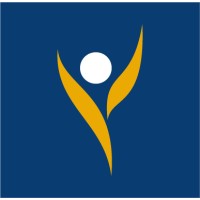
Ochsner Health
Ochsner Health is the leading nonprofit healthcare provider in the Gulf South, delivering expert care at its 46 hospitals and more than 370 health and urgent care centers. For 13 consecutive years, U.S. News & World Report has recognized Ochsner as the No. 1 hospital in Louisiana. Additionally, Ochs
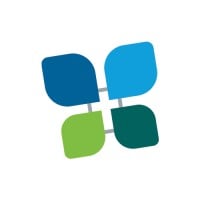
AdventHealth
At AdventHealth, Extending the Healing Ministry of Christ is our mission. It calls us to be His hands and feet in helping people feel whole. Our story is one of hope — one that strives to heal and restore the body, mind and spirit. More than 80,000 skilled and compassionate caregivers in physician
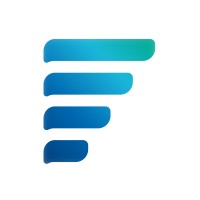
Fresenius Group
Committed to Life - We save and improve human lives with affordable, accessible, and innovative healthcare products and the highest quality in clinical care. Fresenius is a global healthcare company headquartered in Bad Homburg v. d. Höhe, Germany. In fiscal year 2023, Fresenius generated €22.3 bil
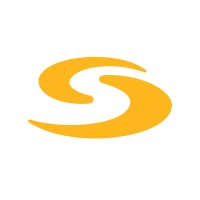
Sentara Health
Sentara Health, an integrated, not-for-profit health care delivery system, celebrates more than 130 years in pursuit of its mission - "we improve health every day." Sentara is one of the largest health systems in the U.S. Mid-Atlantic and Southeast, and among the top 20 largest not-for-profit integr
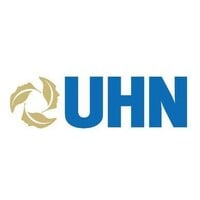
University Health Network
University Health Network (UHN) is Canada's largest research hospital, which includes Toronto General and Toronto Western Hospitals, Princess Margaret Cancer Centre, the Toronto Rehabilitation Institute and the Michener Institute for Education at UHN. The scope of research and complexity of cases at
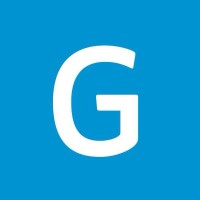
Geisinger
Geisinger is among the nation’s leading providers of value-based care, serving 1.2 million people in urban and rural communities across Pennsylvania. Founded in 1915 by philanthropist Abigail Geisinger, the nonprofit system generates $10 billion in annual revenues across 126 care sites — including 1

Frequently Asked Questions (FAQ) on Cybersecurity Incidents
Cardinal Health CyberSecurity History Information
Total Incidents: According to Rankiteo, Cardinal Health has faced 0 incidents in the past.
Incident Types: As of the current reporting period, Cardinal Health has not encountered any cybersecurity incidents.
Total Financial Loss: The total financial loss from these incidents is estimated to be {total_financial_loss}.
Cybersecurity Posture: The company's overall cybersecurity posture is described as Cardinal Health is a distributor of pharmaceuticals, a global manufacturer and distributor of medical and laboratory products, and a provider of performance and data solutions for healthcare facilities. With more than 50 years in business, operations in more than 30 countries and approximately 48,000 employees globally, we are moving healthcare forward. Disclaimer: LinkedIn is a third-party site unaffiliated with Cardinal Health. Cardinal Health is not responsible for the privacy or security policies or practices on LinkedIn or on any of the third-party websites that we may link to through LinkedIn. You should carefully review the privacy and security practices of LinkedIn and linked third-party websites. We do not necessarily endorse any information found here nor are we responsible for the accuracy of any information, opinions, claims, or advice found here or shared here by our followers. By posting content, ideas, or pictures, you grant Cardinal Health a non-exclusive, royalty-free, perpetual, and worldwide license to use your content and any images posted by you, including the rights to copy, distribute, transmit, display, reproduce, edit, translate, and reformat, and incorporate into a collective work. Cardinal Health reserves all rights relating to the company's LinkedIn account, including removing postings and prohibiting individuals from participating on the page..
Detection and Response: The company detects and responds to cybersecurity incidents through {description_of_detection_and_response_process}.
Incident Details
Incident 1: Ransomware Attack
Title: {Incident_Title}
Description: {Brief_description_of_the_incident}
Date Detected: {Detection_Date}
Date Publicly Disclosed: {Disclosure_Date}
Date Resolved: {Resolution_Date}
Type: {Type_of_Attack}
Attack Vector: {Attack_Vector}
Vulnerability Exploited: {Vulnerability}
Threat Actor: {Threat_Actor}
Motivation: {Motivation}
Incident 2: Data Breach
Title: {Incident_Title}
Description: {Brief_description_of_the_incident}
Date Detected: {Detection_Date}
Date Publicly Disclosed: {Disclosure_Date}
Date Resolved: {Resolution_Date}
Type: {Type_of_Attack}
Attack Vector: {Attack_Vector}
Vulnerability Exploited: {Vulnerability}
Threat Actor: {Threat_Actor}
Motivation: {Motivation}
Common Attack Types: As of now, the company has not encountered any reported incidents involving common cyberattacks.
Identification of Attack Vectors: The company identifies the attack vectors used in incidents through {description_of_identification_process}.
Impact of the Incidents
Incident 1: Ransomware Attack
Financial Loss: {Financial_Loss}
Data Compromised: {Data_Compromised}
Systems Affected: {Systems_Affected}
Downtime: {Downtime}
Operational Impact: {Operational_Impact}
Conversion Rate Impact: {Conversion_Rate_Impact}
Revenue Loss: {Revenue_Loss}
Customer Complaints: {Customer_Complaints}
Brand Reputation Impact: {Brand_Reputation_Impact}
Legal Liabilities: {Legal_Liabilities}
Identity Theft Risk: {Identity_Theft_Risk}
Payment Information Risk: {Payment_Information_Risk}
Incident 2: Data Breach
Financial Loss: {Financial_Loss}
Data Compromised: {Data_Compromised}
Systems Affected: {Systems_Affected}
Downtime: {Downtime}
Operational Impact: {Operational_Impact}
Conversion Rate Impact: {Conversion_Rate_Impact}
Revenue Loss: {Revenue_Loss}
Customer Complaints: {Customer_Complaints}
Brand Reputation Impact: {Brand_Reputation_Impact}
Legal Liabilities: {Legal_Liabilities}
Identity Theft Risk: {Identity_Theft_Risk}
Payment Information Risk: {Payment_Information_Risk}
Average Financial Loss: The average financial loss per incident is {average_financial_loss}.
Commonly Compromised Data Types: The types of data most commonly compromised in incidents are {list_of_commonly_compromised_data_types}.
Incident 1: Ransomware Attack
Entity Name: {Entity_Name}
Entity Type: {Entity_Type}
Industry: {Industry}
Location: {Location}
Size: {Size}
Customers Affected: {Customers_Affected}
Incident 2: Data Breach
Entity Name: {Entity_Name}
Entity Type: {Entity_Type}
Industry: {Industry}
Location: {Location}
Size: {Size}
Customers Affected: {Customers_Affected}
Response to the Incidents
Incident 1: Ransomware Attack
Incident Response Plan Activated: {Yes/No}
Third Party Assistance: {Yes/No}
Law Enforcement Notified: {Yes/No}
Containment Measures: {Containment_Measures}
Remediation Measures: {Remediation_Measures}
Recovery Measures: {Recovery_Measures}
Communication Strategy: {Communication_Strategy}
Adaptive Behavioral WAF: {Adaptive_Behavioral_WAF}
On-Demand Scrubbing Services: {On_Demand_Scrubbing_Services}
Network Segmentation: {Network_Segmentation}
Enhanced Monitoring: {Enhanced_Monitoring}
Incident 2: Data Breach
Incident Response Plan Activated: {Yes/No}
Third Party Assistance: {Yes/No}
Law Enforcement Notified: {Yes/No}
Containment Measures: {Containment_Measures}
Remediation Measures: {Remediation_Measures}
Recovery Measures: {Recovery_Measures}
Communication Strategy: {Communication_Strategy}
Adaptive Behavioral WAF: {Adaptive_Behavioral_WAF}
On-Demand Scrubbing Services: {On_Demand_Scrubbing_Services}
Network Segmentation: {Network_Segmentation}
Enhanced Monitoring: {Enhanced_Monitoring}
Incident Response Plan: The company's incident response plan is described as {description_of_incident_response_plan}.
Third-Party Assistance: The company involves third-party assistance in incident response through {description_of_third_party_involvement}.
Data Breach Information
Incident 2: Data Breach
Type of Data Compromised: {Type_of_Data}
Number of Records Exposed: {Number_of_Records}
Sensitivity of Data: {Sensitivity_of_Data}
Data Exfiltration: {Yes/No}
Data Encryption: {Yes/No}
File Types Exposed: {File_Types}
Personally Identifiable Information: {Yes/No}
Prevention of Data Exfiltration: The company takes the following measures to prevent data exfiltration: {description_of_prevention_measures}.
Handling of PII Incidents: The company handles incidents involving personally identifiable information (PII) through {description_of_handling_process}.
Ransomware Information
Incident 1: Ransomware Attack
Ransom Demanded: {Ransom_Amount}
Ransom Paid: {Ransom_Paid}
Ransomware Strain: {Ransomware_Strain}
Data Encryption: {Yes/No}
Data Exfiltration: {Yes/No}
Ransom Payment Policy: The company's policy on paying ransoms in ransomware incidents is described as {description_of_ransom_payment_policy}.
Data Recovery from Ransomware: The company recovers data encrypted by ransomware through {description_of_data_recovery_process}.
Regulatory Compliance
Incident 1: Ransomware Attack
Regulations Violated: {Regulations_Violated}
Fines Imposed: {Fines_Imposed}
Legal Actions: {Legal_Actions}
Regulatory Notifications: {Regulatory_Notifications}
Incident 2: Data Breach
Regulations Violated: {Regulations_Violated}
Fines Imposed: {Fines_Imposed}
Legal Actions: {Legal_Actions}
Regulatory Notifications: {Regulatory_Notifications}
Regulatory Frameworks: The company complies with the following regulatory frameworks regarding cybersecurity: {list_of_regulatory_frameworks}.
Ensuring Regulatory Compliance: The company ensures compliance with regulatory requirements through {description_of_compliance_measures}.
Lessons Learned and Recommendations
Incident 1: Ransomware Attack
Lessons Learned: {Lessons_Learned}
Incident 2: Data Breach
Lessons Learned: {Lessons_Learned}
Incident 1: Ransomware Attack
Recommendations: {Recommendations}
Incident 2: Data Breach
Recommendations: {Recommendations}
Key Lessons Learned: The key lessons learned from past incidents are {list_of_key_lessons_learned}.
Implemented Recommendations: The company has implemented the following recommendations to improve cybersecurity: {list_of_implemented_recommendations}.
References
Additional Resources: Stakeholders can find additional resources on cybersecurity best practices at {list_of_additional_resources}.
Investigation Status
Incident 1: Ransomware Attack
Investigation Status: {Investigation_Status}
Incident 2: Data Breach
Investigation Status: {Investigation_Status}
Communication of Investigation Status: The company communicates the status of incident investigations to stakeholders through {description_of_communication_process}.
Stakeholder and Customer Advisories
Incident 1: Ransomware Attack
Stakeholder Advisories: {Stakeholder_Advisories}
Customer Advisories: {Customer_Advisories}
Incident 2: Data Breach
Stakeholder Advisories: {Stakeholder_Advisories}
Customer Advisories: {Customer_Advisories}
Advisories Provided: The company provides the following advisories to stakeholders and customers following an incident: {description_of_advisories_provided}.
Initial Access Broker
Incident 1: Ransomware Attack
Entry Point: {Entry_Point}
Reconnaissance Period: {Reconnaissance_Period}
Backdoors Established: {Backdoors_Established}
High Value Targets: {High_Value_Targets}
Data Sold on Dark Web: {Yes/No}
Incident 2: Data Breach
Entry Point: {Entry_Point}
Reconnaissance Period: {Reconnaissance_Period}
Backdoors Established: {Backdoors_Established}
High Value Targets: {High_Value_Targets}
Data Sold on Dark Web: {Yes/No}
Monitoring and Mitigation of Initial Access Brokers: The company monitors and mitigates the activities of initial access brokers through {description_of_monitoring_and_mitigation_measures}.
Post-Incident Analysis
Incident 1: Ransomware Attack
Root Causes: {Root_Causes}
Corrective Actions: {Corrective_Actions}
Incident 2: Data Breach
Root Causes: {Root_Causes}
Corrective Actions: {Corrective_Actions}
Post-Incident Analysis Process: The company's process for conducting post-incident analysis is described as {description_of_post_incident_analysis_process}.
Corrective Actions Taken: The company has taken the following corrective actions based on post-incident analysis: {list_of_corrective_actions_taken}.
Additional Questions
General Information
Ransom Payment History: The company has {paid/not_paid} ransoms in the past.
Last Ransom Demanded: The amount of the last ransom demanded was {last_ransom_amount}.
Last Attacking Group: The attacking group in the last incident was {last_attacking_group}.
Incident Details
Most Recent Incident Detected: The most recent incident detected was on {most_recent_incident_detected_date}.
Most Recent Incident Publicly Disclosed: The most recent incident publicly disclosed was on {most_recent_incident_publicly_disclosed_date}.
Most Recent Incident Resolved: The most recent incident resolved was on {most_recent_incident_resolved_date}.
Impact of the Incidents
Highest Financial Loss: The highest financial loss from an incident was {highest_financial_loss}.
Most Significant Data Compromised: The most significant data compromised in an incident was {most_significant_data_compromised}.
Most Significant System Affected: The most significant system affected in an incident was {most_significant_system_affected}.
Response to the Incidents
Third-Party Assistance in Most Recent Incident: The third-party assistance involved in the most recent incident was {third_party_assistance_in_most_recent_incident}.
Containment Measures in Most Recent Incident: The containment measures taken in the most recent incident were {containment_measures_in_most_recent_incident}.
Data Breach Information
Most Sensitive Data Compromised: The most sensitive data compromised in a breach was {most_sensitive_data_compromised}.
Number of Records Exposed: The number of records exposed in the most significant breach was {number_of_records_exposed}.
Ransomware Information
Highest Ransom Demanded: The highest ransom demanded in a ransomware incident was {highest_ransom_demanded}.
Highest Ransom Paid: The highest ransom paid in a ransomware incident was {highest_ransom_paid}.
Regulatory Compliance
Highest Fine Imposed: The highest fine imposed for a regulatory violation was {highest_fine_imposed}.
Most Significant Legal Action: The most significant legal action taken for a regulatory violation was {most_significant_legal_action}.
Lessons Learned and Recommendations
Most Significant Lesson Learned: The most significant lesson learned from past incidents was {most_significant_lesson_learned}.
Most Significant Recommendation Implemented: The most significant recommendation implemented to improve cybersecurity was {most_significant_recommendation_implemented}.
References
Most Recent Source: The most recent source of information about an incident is {most_recent_source}.
Most Recent URL for Additional Resources: The most recent URL for additional resources on cybersecurity best practices is {most_recent_url}.
Investigation Status
Current Status of Most Recent Investigation: The current status of the most recent investigation is {current_status_of_most_recent_investigation}.
Stakeholder and Customer Advisories
Most Recent Stakeholder Advisory: The most recent stakeholder advisory issued was {most_recent_stakeholder_advisory}.
Most Recent Customer Advisory: The most recent customer advisory issued was {most_recent_customer_advisory}.
Initial Access Broker
Most Recent Entry Point: The most recent entry point used by an initial access broker was {most_recent_entry_point}.
Most Recent Reconnaissance Period: The most recent reconnaissance period for an incident was {most_recent_reconnaissance_period}.
Post-Incident Analysis
Most Significant Root Cause: The most significant root cause identified in post-incident analysis was {most_significant_root_cause}.
Most Significant Corrective Action: The most significant corrective action taken based on post-incident analysis was {most_significant_corrective_action}.
What Do We Measure?
















Every week, Rankiteo analyzes billions of signals to give organizations a sharper, faster view of emerging risks. With deeper, more actionable intelligence at their fingertips, security teams can outpace threat actors, respond instantly to Zero-Day attacks, and dramatically shrink their risk exposure window.
These are some of the factors we use to calculate the overall score:
Identify exposed access points, detect misconfigured SSL certificates, and uncover vulnerabilities across the network infrastructure.
Gain visibility into the software components used within an organization to detect vulnerabilities, manage risk, and ensure supply chain security.
Monitor and manage all IT assets and their configurations to ensure accurate, real-time visibility across the company's technology environment.
Leverage real-time insights on active threats, malware campaigns, and emerging vulnerabilities to proactively defend against evolving cyberattacks.




